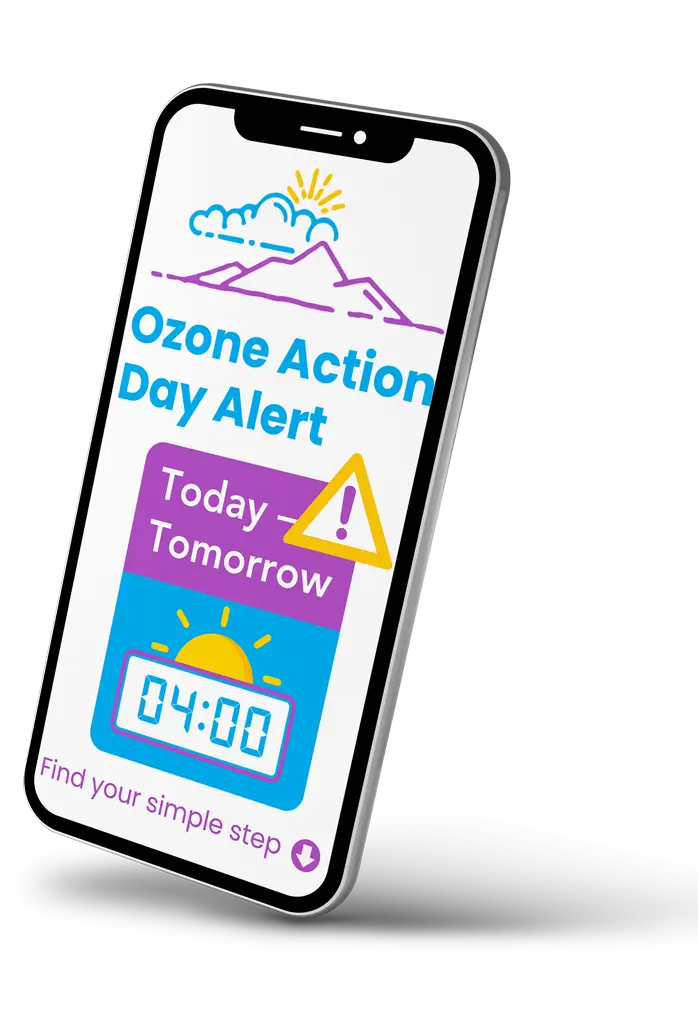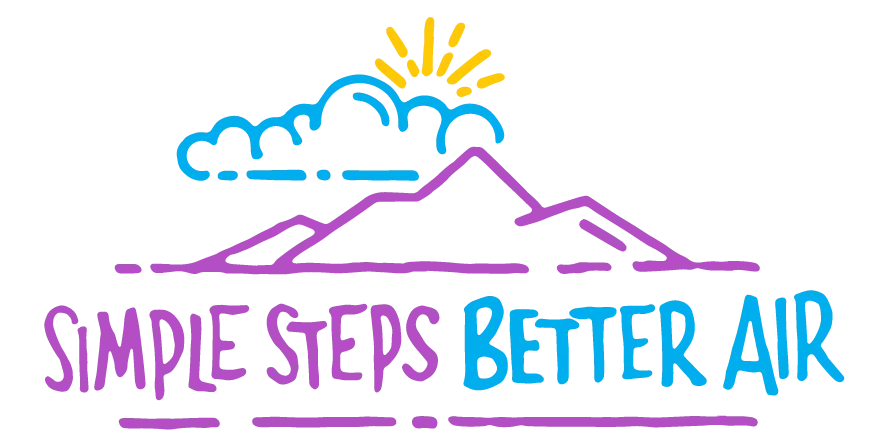Text “BetterAirCO” to 21000 for text alerts
Or sign up below for email alerts
Concerned about your data? We will never share or sell it! See our privacy policy for more information.
Why does Ozone Matter?
Ground-level ozone is the Colorado Front Range’s most pressing air pollution problem! It forms when fossil fuel emissions combine on hot, sunny summer days. At higher concentrations, breathing in ground-level ozone irritates our throats and lungs, increases our susceptibility to respiratory infections, and exacerbates ailments such as asthma.
What is an “Ozone Action Day Alert”?
Between late May and mid-September, Simple Steps. Better Air. and the Regional Air Quality Council (RAQC) issue ground-level ozone advisories in partnership with the Colorado Department of Public Health and Environment (CDPHE). Known as “Ozone Action Day Alerts,” these advisories forecast the days most likely to have higher ozone concentrations and negatively affect our health. The alerts last between 4 p.m. of the first day, until midnight, or until 4 p.m. of the following day. They can be extended for multiple days if needed.

Why sign up?
Signing up for text or email alerts from Simple Steps. Better Air. makes it easy to know when it matters most to reduce your emissions and protect your health!
We will only send you a text or an email the days when an Ozone Action Day Alert is called. Plus, we’ll include timely tips and tricks for how you can reduce your emissions! You can unsubscribe or resubscribe at any time.
And if you ask us a question, we’ll probably text you back! However, please note this is not a real-time communication system. Please explore the blog, FAQ, or Air Quality 101 for the quickest answers to the most common air quality questions.
